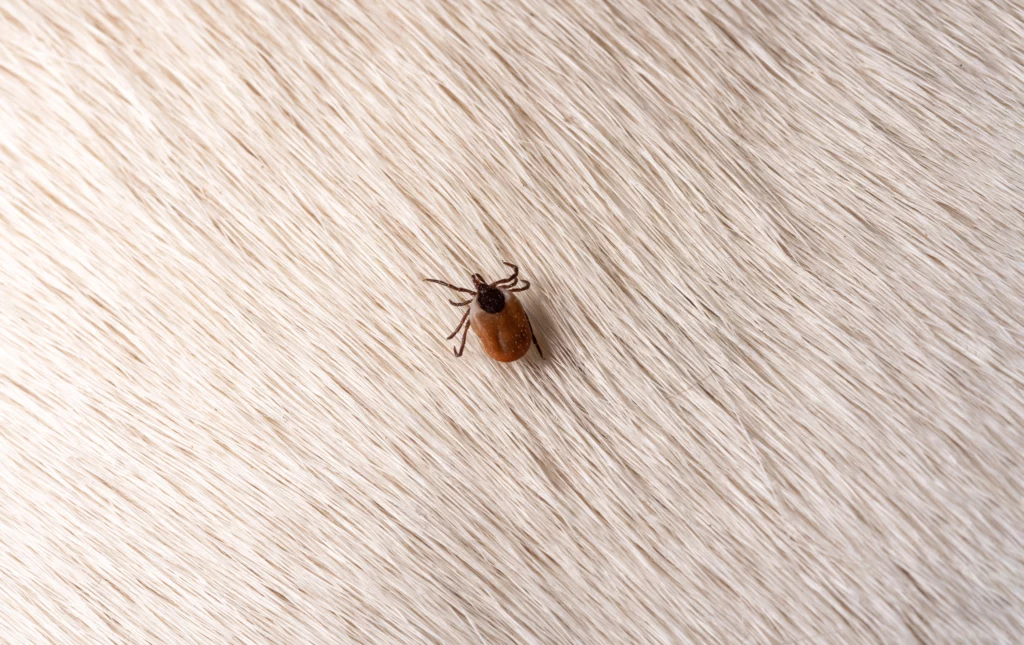Weather conditions play a crucial role in determining the prevalence and activity levels of fleas and ticks in your yard. Understanding how weather patterns influence these pests is essential for effective flea and tick yard treatment. In this blog post, we'll delve into the ways weather conditions impact flea and tick populations and explore strategies for professional yard treatment in response to varying weather conditions.
The Role of Temperature
Temperature is a primary factor influencing the life cycles and behavior of fleas and ticks. These ectoparasites thrive in warm and humid environments, with temperatures ranging between 70°F and 85°F being most conducive to their development. During warmer months, such as spring and summer, flea and tick populations tend to peak as favorable temperatures accelerate their reproductive rates and activity levels.
Conversely, colder temperatures during fall and winter can significantly reduce flea and tick activity. Cold weather slows down their metabolism, inhibiting growth and reproduction. However, it's essential to note that fleas and ticks can still survive in protected outdoor areas, such as leaf litter and animal burrows, during colder months.
The Impact of Humidity
Humidity levels play a critical role in the survival and proliferation of fleas and ticks. These pests require sufficient moisture to thrive, with high humidity facilitating egg hatching and larval development. Areas with high humidity, such as coastal regions and dense forests, may experience higher flea and tick populations due to the availability of suitable breeding habitats.
Conversely, low humidity levels can impede flea and tick survival, particularly during the egg and larval stages. Arid environments with low humidity may experience reduced flea and tick activity, although moisture-retaining areas within yards, such as irrigated lawns and gardens, can still harbor these pests.
The Influence of Rainfall
Rainfall patterns directly affect flea and tick populations by creating conducive breeding environments. Moderate to heavy rainfall can lead to the accumulation of standing water, providing breeding grounds for fleas and ticks. Stagnant pools of water in yards, as well as overgrown vegetation, can serve as ideal habitats for these pests to thrive.
Additionally, rainfall promotes the growth of vegetation, including tall grass and weeds, which provide hiding places for fleas and ticks. Overgrown vegetation not only offers shelter for these pests but also makes it easier for them to access hosts for blood meals, increasing the risk of infestation.
Seasonal Variation in Flea and Tick Activity
Flea and tick activity varies seasonally, with peak activity typically occurring during warmer months. Spring and summer are prime seasons for flea and tick infestations, as favorable temperatures and increased humidity create optimal conditions for their proliferation. During these seasons, pet owners and homeowners should remain vigilant and implement preventive measures to protect against infestations.
In contrast, fall and winter often see a decline in flea and tick activity due to colder temperatures and reduced humidity levels. However, it's essential to continue preventive measures year-round, as fleas and ticks can still pose a threat, especially in milder climates where freezing temperatures are less common.
Adapting Pest Control Strategies to Weather Conditions
Professional flea and tick yard treatment services employ a variety of strategies to address fluctuating weather conditions. Integrated pest management (IPM) approaches combine chemical treatments with environmental modifications and cultural practices to target fleas and ticks at different life stages.
During periods of high flea and tick activity, such as peak summer months, targeted chemical treatments may be necessary to reduce populations and prevent infestations. Environmental modifications, such as reducing moisture levels and trimming vegetation, can also help create less hospitable conditions for these pests.
Monitoring and Prevention
Regular monitoring of weather conditions and flea and tick populations is essential for effective prevention. Homeowners can utilize weather forecasts to anticipate increased pest activity and take proactive measures to protect their yards. Additionally, routine inspections of pets and outdoor areas can help detect early signs of infestation and prompt intervention.
Consulting with Pest Control Professionals
When faced with persistent flea and tick issues or challenging weather conditions, consulting with pest control professionals is advisable. Experienced technicians can assess your yard's specific needs, identify contributing factors to flea and tick infestations, and recommend tailored treatment solutions.
Conclusion
Weather conditions significantly influence flea and tick populations in yards, with temperature, humidity, and rainfall playing key roles in their proliferation and activity levels. By understanding these factors and adapting pest control strategies accordingly, homeowners can effectively manage flea and tick infestations and create a safer outdoor environment for themselves and their pets. Professional flea and tick yard treatment services offer expertise and comprehensive solutions to address weather-related pest challenges, ensuring long-term protection and peace of mind.
Leave a comment